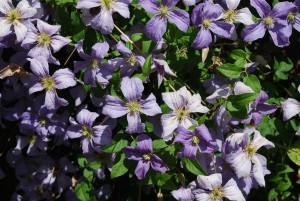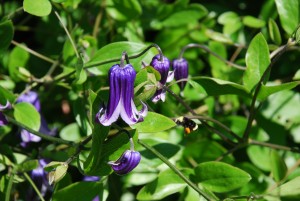The old-fashioned clematis(es) in grandma’s garden bloomed one time in spring or summer and bore huge showy flowers (USDA hardiness zones 3-7). Vines took up lots of space in the garden. Old cultivars grew 8-9 feet tall; many bore one single large flower at the end of each growing stem. They bloomed at one time and, even today, are stunningly beautiful and still sold at many garden centers.
Today’s gardens are smaller in size. Clematis plants need to be more compact, free-flowering, and produce more flower power over several months in smaller spaces. Modern day clematis are fibrous rooted to withstand colder winters and have better mildew disease resistance. Many are double flowering, offer more color choices that do not fade and are easier to prune. Early flowering types are also available that bloom profusely on either old wood or new growth.
Many shorter types can be grown in pots and containers instead of walls and trellises. Some are “free-flowering” types produce a lot of flowers up along their stems. Some develop 5 to 7 leaf nodes that form multiple flowers buds over several months.
Many gardeners have a difficult time understanding how to prune clematis. Modern cultivars are a lot easier to prune. In early spring simply removed all but 6 to 9 inches of old vine wood above soil level. After pruning and fertilizing in early spring, vines and compact shrubby types grow rapidly and bloom over several months.
I highly recommend Raymond Evison 2007 book “Clematis for Small Spaces,” which details 150 of the best clematis cultivars for patios and decks.



 Posted in
Posted in 
